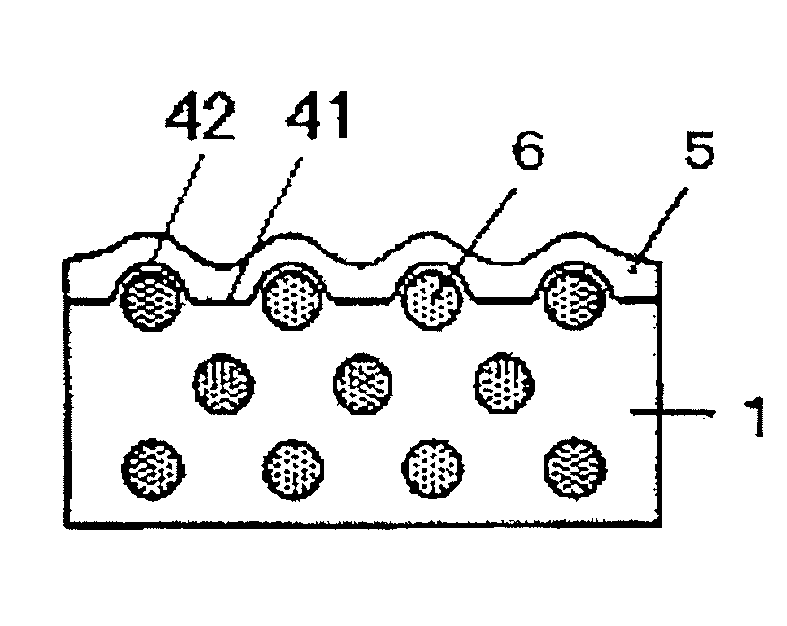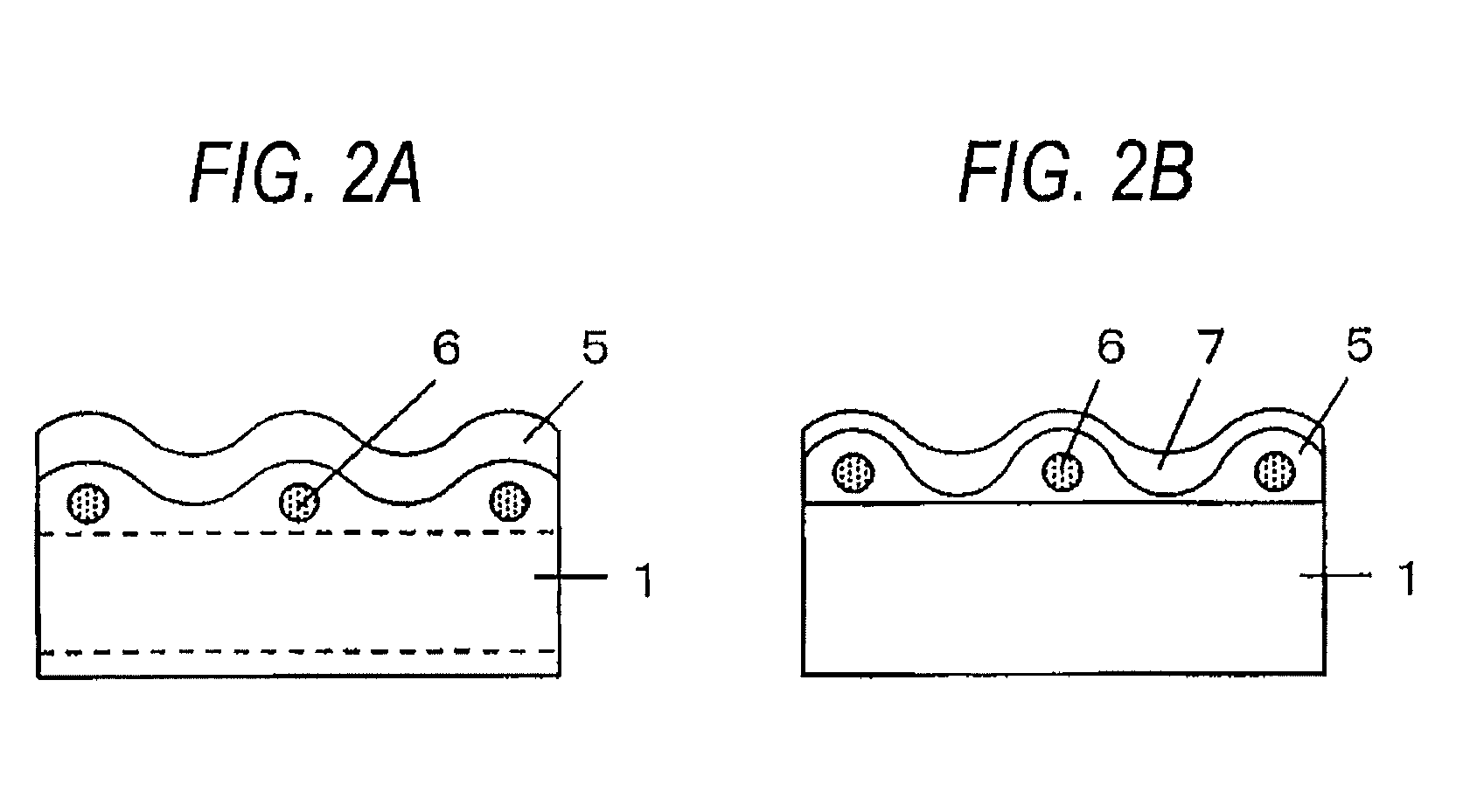Method of making antiglare film, antiglare film, polarizing plate, image display device, and transmissive/semi-transmissive liquid crystal display
a liquid crystal display and film technology, applied in the direction of polarizing elements, diffusing elements, instruments, etc., can solve the problems of inability to achieve antiglare performance, additional equipment cost, yield loss, etc., and achieve low scintillation, high front white brightness, and high contrast
- Summary
- Abstract
- Description
- Claims
- Application Information
AI Technical Summary
Benefits of technology
Problems solved by technology
Method used
Image
Examples
examples
[0161]The invention will now be illustrated in greater detail with reference to Examples.
[A] Preparation of Transparent Base
[0162]Dopes A to O were prepared according to the formulations of Table 1. Transparent bases 1 through 17 were prepared by co-casting three different dopes to make a surface dope / basal dope / surface dope structure as shown in Table 2. The solid content of the dope for a basal layer (dope B) and the solid content of the dopes for surface layers (dopes A and C to O) were adjusted to 23 mass % and 18 mass %, respectively, with a 90 / 10 by mass mixed solvent of methylene chloride and methanol. The refractive index of the particles used in the dopes was measured as described supra.
[0163]Transparent bases 1 to 15 and 17 were made using the casting equipment illustrated in FIG. 3, which had a mirror finished casting drum cooled to −10° C. The three dopes were co-cast with the dope for surface layer 1 in contact with the rotating drum, chilled by the drum to a gel while ...
PUM
| Property | Measurement | Unit |
|---|---|---|
| primary particle size | aaaaa | aaaaa |
| primary particle size | aaaaa | aaaaa |
| height Rt | aaaaa | aaaaa |
Abstract
Description
Claims
Application Information
 Login to View More
Login to View More - R&D
- Intellectual Property
- Life Sciences
- Materials
- Tech Scout
- Unparalleled Data Quality
- Higher Quality Content
- 60% Fewer Hallucinations
Browse by: Latest US Patents, China's latest patents, Technical Efficacy Thesaurus, Application Domain, Technology Topic, Popular Technical Reports.
© 2025 PatSnap. All rights reserved.Legal|Privacy policy|Modern Slavery Act Transparency Statement|Sitemap|About US| Contact US: help@patsnap.com



